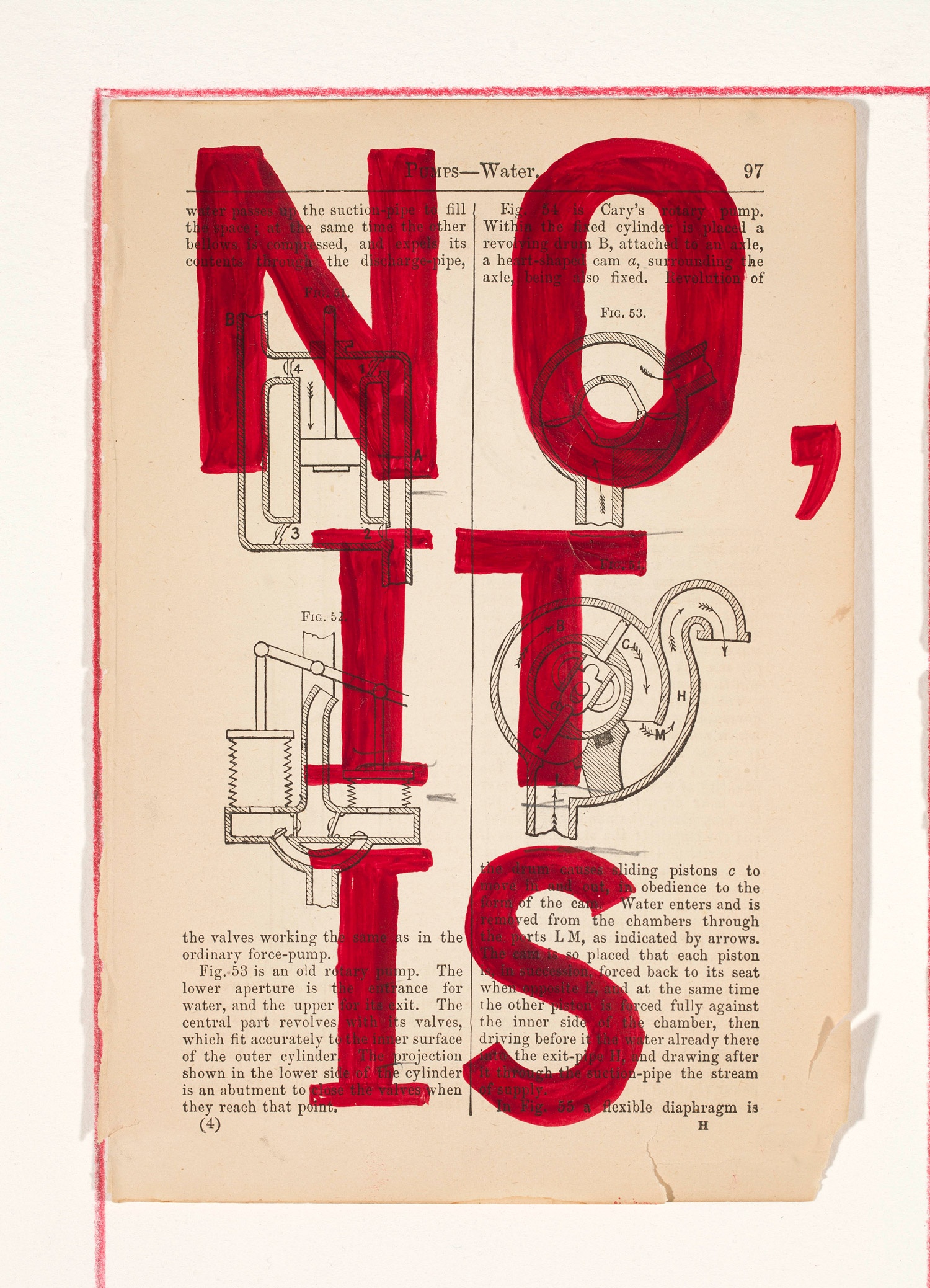William Kentridge

Composed from over 500 images drawn on the pages of antiquarian publications, No, IT IS expands the rudimentary animation flipbooks offer as form, pairing stop motion with the turning of pages cut loose from their binding. The three-channel triptych – titled Workshop Receipts, The Anatomy of Melancholy, and Practical Enquiries, respectively – recalls the many objects of Kentridge’s repertoire; bird, Bialetti, ampersand, rotary telephone, and the figure of the artist himself. In turns pacing across pages, standing restlessly, and dancing with a woman, the image of Kentridge remains constant amid the fast-paced progression of geometric shapes, words, calligraphic lines, and object studies. Set to the sound of a film projector, the images whirr past in time, offering less a narrative than provocation; insight, perhaps, into the non-linear and disparate nature of thought – “taking sense and deconstructing it,” in the artist’s words, “taking nonsense and seeing if sense can be constructed from it... This leads to the question of mistranslation, and the pressure that imperfect understanding gives to the act of imagination.”
b.1955, Johannesburg
Performing the character of the artist working on the stage (in the world) of the studio, William Kentridge centres art-making as primary action, preoccupation, and plot. Appearing across mediums as his own best actor, he draws an autobiography in walks across pages of notebooks, megaphones shouting poetry as propaganda, making a song and dance in his studio as chief conjuror in a creative play. Looking at his work, a ceaseless output and extraordinary contribution to the South African cultural landscape, one finds a repetition of people, places and histories: the city of Johannesburg, a white stinkwood tree in the garden of his childhood home (one of two planted when he was nine years old), his father (Sir Sydney Kentridge) and mother (Felicia Kentridge), both of whom contributed greatly to the dissolution of apartheid as lawyers and activists. The Kentridge home, where the artist still lives today, was populated in his childhood by his parents’ artist friends and political collaborators, a milieu that proved formative in his ongoing engagement with world histories of expansionism and oppression throughout the 20th century. Parallel to – or rather, entangled with – these reflections is an enquiry into art historical movements, particularly those that press language to unexpected ends, such as Dada, Constructivism and Surrealism.
Moving dextrously from the particular and personal to the global political terrain, Kentridge returns to metabolise these findings in the working home of the artist’s studio, where the practitioner is staged as a public figure making visible his modes of investigation. Celebrated as a leading artist of the 21st century, Kentridge is the artistic director of operas and orchestras, from Sydney to London to Paris to New York to Cape Town, known for his collaborative way of working that prioritises thinking together with fellow practitioners skilled in their disciplines (for example, as composers, as dancers). Most often, he is someone who draws, in charcoal, in pencil and pencil crayon, in ink, the gestures and mark-making assured. In a collection of books for which A4 acted as custodian during the exhibition History on One Leg, one finds 200 publications devoted to Kentridge’s practice. In the end, he has said, the work that emerges is who you are.